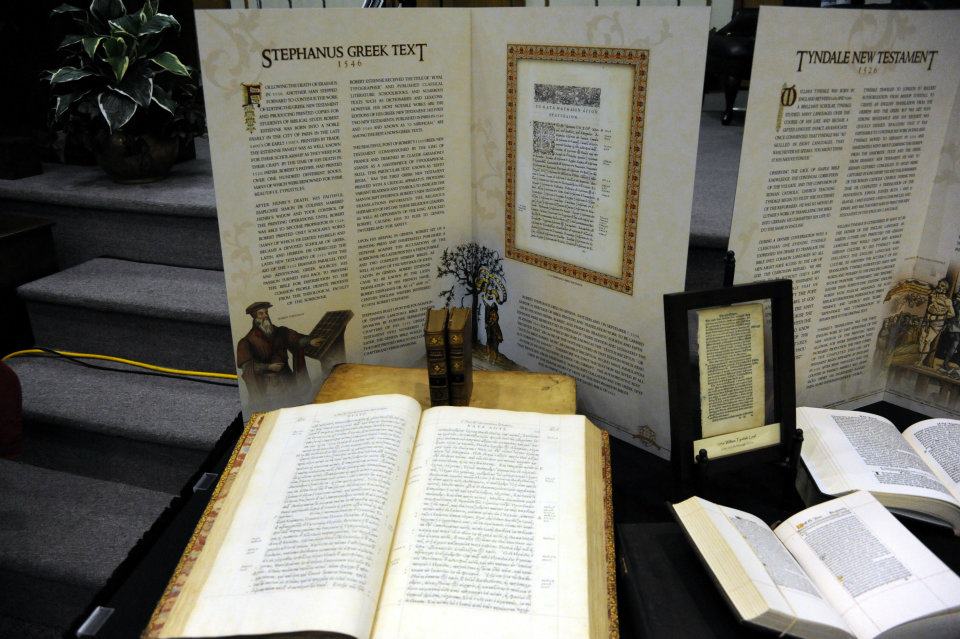|
**List: Mongolian Ministry
Bible ( Библи )
Mongolian: Buriat...
"Buriat, or Buryat, Mongolian is spoken by
about half of the
approximately 675,000 inhabitants of the Buriat Autonomous
SSR (Capital, Ulan Ude) of the Soviet
Union. Buriat dialects
are also spoken by the Bargu of the Hailar River region of
northwestern Manchuria. The
Buriat writing is an adaptation of
the Russian Cyrillic alphabet."--
1000 Tongues, 1972 [Info only]
"Spoken by about 300,000 people
in the
provinces of Irkutsk and Transhaikalia, Siberia, U.S.S.R."--1000
Tongues, 1939 [Info only]
|
"First publication, St.
Matthew’s
Gospel in 1909 at Irkutsk by the BFBS; tr. by
a Buriat my.-priest named Tchestochin
and revised by the Translation Commission of
the Orthodox My. Society at Irkutsk.
St. Mark’s Gospel, by the Irkutsk
Translation
Commission, 1912."--1000 Tongues, 1939 [Info only:
my.-priest?]
|
MONGOLIAN: Buriat dialect--1000 Tongues, 1939 [Info only: Russian
characters n.d. Matthew 4:10 unknown.]
Buriat-Cyrillic Character
"1909 Matthew 1912
Mark BFBS, Irkutsk
Translated by a Buriat my. priest named Tchestochin, and
revised by the Translation Commission of the Orthodox
MS."--1000 Tongues, 1972 [Info only:
CYRILLIC CHARACTER "1912" Mark 1:2 correct
(Прор{_}гут = Prophets).]
|
Mongolian: Kalmuk...
"Kalmuk, or Kalmyk, is spoken by less than a
third of the 180,000
inhabitants of the Kalmuk Autonomous SSR (Capital, Elista) of
the Soviet Union. Kalmuk is one
of the Oirst Mongolian
languages (dialects) spoken in the Mountain-Altai Autonomous
SSR of the Soviet Union (Torgut dialect), and southward in
China and southwestern Mongolia (Darbat, Zahachin, Mingat,
and other dialects). The Kalmuk alphabet is an adaptation of the
Mongolian script, devised in 1648 by Lama Zaya Pandita. It is
more suited to the phonetic structure of the Mongolian tongues
than is the Mongolian alphabet." --1000 Tongues, 1972 [Info
only]
"Spoken by nomads who live in
the eastern part of the Thian Shan range,
on the western border of the Gobi Desert, spreading west into Kansu and
westward to the Kalmuk Steppes."--1000 Tongues, 1939 [Info
only]
|
Kalmuk-Mongolian Character
"1815 Matthew BFBS, Russian BS, St. Petersburg
1820 John Acts 1821 Mark
Luke
1827 New Testament BFBS, St. Petersburg
Translated by I. J. Schmidt, a merchant among the Kalmuks."--
1000 Tongues, 1972 [Info only]
|
"Evangelium St. Mathaei in linguam Calmucco-
Mongolicam translatum ab Isaaco Jacobo Schmidt. Cura et studio Societatis
Biblicae Ruthenicae. (Petropoli, apud Drechslerum, 1815)" [Info
only]
https://catalog.hathitrust.org/Record/006761029
"Pozdneyeff version: the
Gospels, BFBS, St. Petersburg, 1887; tr. by Alexis Pozdneyeff and
Archpriest Smirnoff: Acts to Revelation, 1894; tr. by Pozdneyeff and
Dordzbe. Kutusoff.
CP: BFBS."--1000 Tongues, 1939 [Info
only:
Archpriest?]
|
MONGOLIAN: Kalmuk dialect--1000 Tongues, 1939 [Info only: Mongolian
characters (modified) "1896" Book ch:v unknown.]
"1887 Gospels 1894 New
Testament BFBS, St. Petersburg
Translated by Alexis Pozdneyeff, a professor of Mongolian."--
1000 Tongues, 1972 [Info only:
KALMUK-MONGOLIAN CHARACTER "1894" Mark 1:2 unknown.]
|
"MONGOLIAN: KALMYK (BTT 884. Russia)
(Gospels) HOBЬIЙ ЗAB[Ь/]TЪ
ГOCПOДA И CПACA HAШEГO
IИCУCA XPИCTA.
[Second tp in Mongolian].
[St. Petersburg, British and Foreign Bible Society], 1887.
2 vols. in one: 587, 688p. 24cm.
D & M 6836 and 6837. 21" [Info only: f06.pdf]
Mongolian: Khalka...
"Khalka Mongolian is the official language
of the People’s
Republic of Mongolia, formerly known
as Outer Mongolia. It
is spoken with local variations by an estimated 600,000 people.
Mongolian is spoken in many dialects over a vast area centering
on, rather than contained by, the Mongolian Republic. An
Altaic language, Mongolian is generally divided into the
Khalka, Buriat (Northern), and Kalmuk (Western) dialect
groups. Literary Mongolian
(q.v.) is considered separately in
this book, although Khalka serves as the basis for the modern
literary language in use in the Mongolian Republic." --1000 Tongues,
1972 [Info only]
"Spoken by tribes of Mongols,
who ex-
tend from the Great Wall of China to
the River Amur, and across the Gobi
Desert as far as the Altai Mountains."--1000 Tongues, 1939
[Info only]
|
"First publication, St.
Matthew's
Gospel in 1872 at Peking by the BFBS;
tr. by a Mongol lama, revised by Joseph
Edkins and Joseph S. I. J.
Schereschewsky."--1000 Tongues, 1939 [Info only:
SIJS was a born-again Jew.]
|
MONGOLIAN: Khalka dialect--1000 Tongues, 1939 [Info only: Mongolian
characters n.d. Matthew 4:10 unknown.]
Mongolian Character
"1872 Matthew BFBS, Peking
Translated by a Mongol lama, who based his work on
the Literary
Mongolian version. The translation was revised
by S. I. J. Scheres-
chewsky and Joseph Edkins."--1000 Tongues, 1972
[Info only:
MONGOLIAN CHARACTER "1872" Matthew "3(b)-7(a)" unknown.]
|
**File: Mongolian: Literary Bible History
**File: Mongolian Bible History (3)--1860
S. Bagster [Info only]
**File: Mongolian Critical Text History
|

